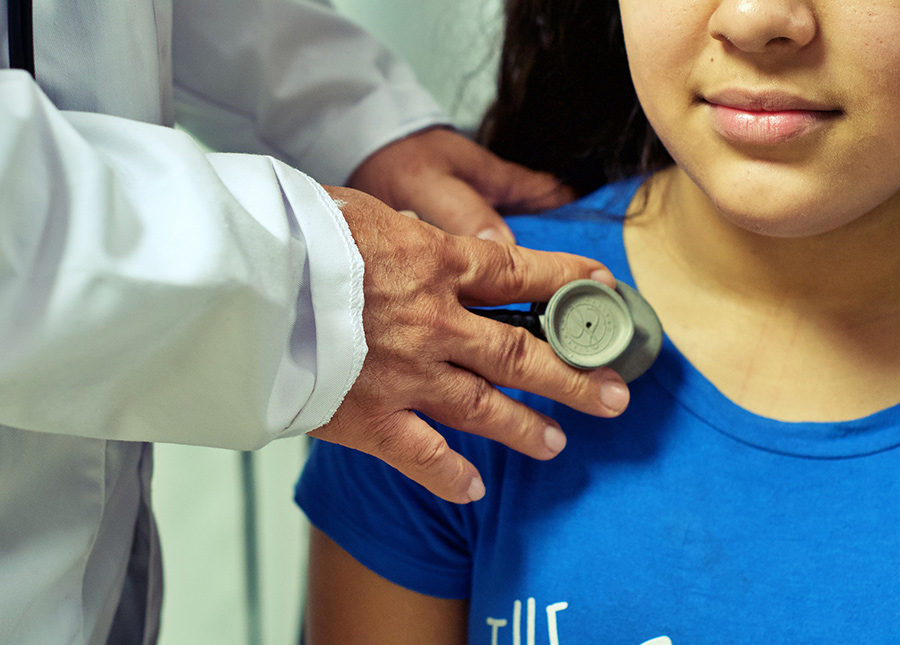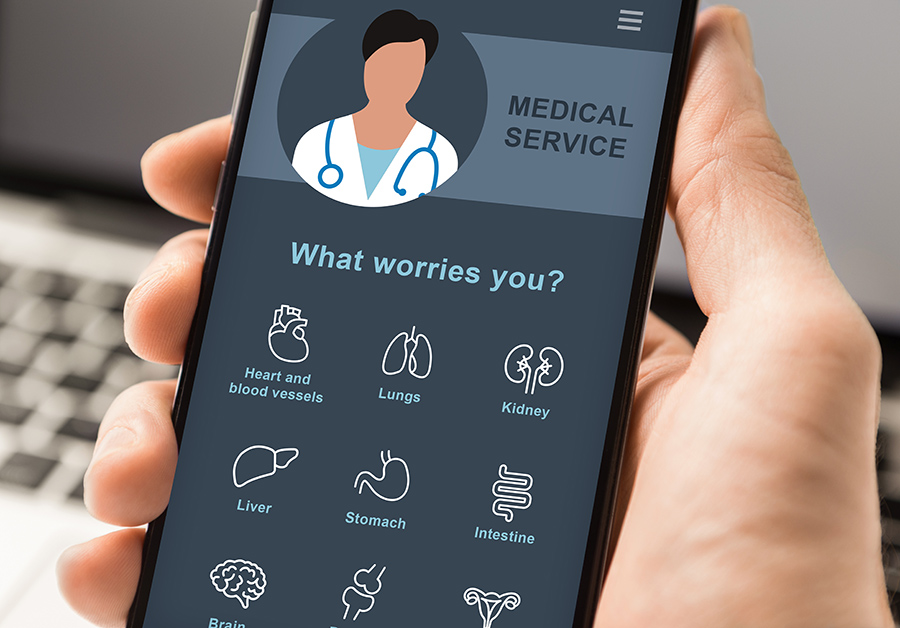The role of digital health in paediatric obesity treatment
The prevalence of obesity in children and adolescents is at high levels. Novel approaches are needed to provide effective care to this population and to minimise the risks of long-term health complications. Digital health has progressed hugely over recent years and offers an attractive option for delivering paediatric weight management interventions. Louise Tully, RCSI University of Medicine and Health Sciences in Dublin, Ireland, is exploring the potential application of digital health and telemedicine for children with obesity. Results suggest this may be an effective option to offer children and their families.
Around one in five primary school children in Ireland are living with overweight or obesity. The total lifetime costs associated with childhood obesity are estimated to be around 7.2 billion euros. While part of this cost is associated with the longer-term health impacts of obesity, it also includes the costs of treating obesity-related complications during childhood.
Ireland has a dedicated centre for providing treatment to children and adolescents with obesity, the W82GO Child and Adolescent Obesity Service in Children’s Health Ireland at Temple Street. The service is accredited by the European Association for the Study of Obesity, a multinational organisation that is a leading voice on obesity prevention and management. The Obesity Service provides evidence-based obesity treatment interventions which are delivered by a multidisciplinary team of health professionals, and which consider the whole-family in their approach.

There has been a huge rise in digital health technologies and programmes over recent years, especially throughout the COVID-19 pandemic when many healthcare services have had to move to online options. However, digital health approaches have not yet reached their full potential, and there is still a growing need for appropriately developed technologies to help support people in monitoring and managing their own health. In particular, factors such as logistics, privacy, consent, child welfare, and communication may differ between adult and paediatric services.
While there are many advantages to digital technologies, consideration also has to be given to unanticipated events and to populations and communities who are affected by health inequalities, as this may prevent them accessing digital health interventions. A balance needs to be found between empowering patients to engage with their healthcare through digital technologies and avoiding creating even larger discrepancies in access to healthcare between communities.
Ireland has a dedicated centre for providing treatment to children and adolescents with obesity, the W82GO Child and Adolescent Obesity Service.
Louise Tully, at RCSI University of Medicine and Health Sciences in Ireland, is undertaking a PhD to explore the use of digital health for delivering paediatric obesity treatment interventions. She is part of a wider team, led by Dr Grace O’Malley, who are researching and developing innovative ways to deliver care to patients and their families.
Use of hospital services
Previous studies in the Republic of Ireland have shown that increased body mass index (BMI) in adolescents was significantly associated with more input from a general practitioner (GP), but fewer studies have been done looking at how this relates to hospital visits.

Tully and colleagues undertook a retrospective study which assessed the number of hospital visits and associated costs of 322 children referred to a national paediatric obesity treatment service in the Republic of Ireland. The data showed that children with obesity may visit hospital around 27 times in the two years before and two years after they are first offered obesity treatment, at an average cost of 2,590 euros per child. If the child had other conditions, they were likely to attend hospital more often and incur higher healthcare costs.
Identifying barriers and facilitators
Despite the pressing need for new digital and telehealth approaches, especially during the COVID-19 pandemic, the team used best-practice evidence synthesis guidelines to inform their project. This systematic process ensured that the review of digital services was based on data compiled using expert guidelines, and the roll-out of digital care was evidence based.
Before implementing a paediatric telemedicine service, the researchers conducted a rapid evidence review to identify factors that needed to be considered when ensuring a smooth roll-out of the telemedical service. Reviewing previous experiences of stakeholders implementing paediatric telehealth helped the team identify barriers and facilitators that may need to be considered for their own service.

The review looked at 27 studies in total. The team found that, internationally, most families were happy to use telemedicine, a branch of the digital health movement that allows clinicians to deliver care to a patient remotely, removing the need to see them face to face. This may be because it removes the need to travel to a centre for an appointment and can therefore be more time effective, especially for families who live in remote areas (providing the technology works smoothly!). It can also result in a financial saving to families.
In order to deliver an effective service, the review also showed that healthcare workers felt that planning, use of appropriate technology platforms, and access to support were essential in delivering virtual patient care. Any digital platform must be easy and intuitive for staff and patients to work with and meet all the functions required to carry out a virtual consultation, education, or therapy session. For example, using a virtual approach may not allow healthcare professionals to conduct thorough physical examinations as they may do normally. On the other hand, some patients may prefer a virtual approach and may feel more confident if they do not have to see someone face to face.
The results also showed several aspects that were important in successfully rolling out a digital service, such as staff training, IT support, and cultivation of telemedicine champions.
Despite becoming the ‘new normal’ throughout COVID-19, around 40% of families in the W82GO service did not choose virtual care due to connection difficulties, privacy challenges, low digital literacy or a preference to wait for a face-to-face appointment due to some of the same reasons as staff (preferring or warranting an in-person examination).

Telemedicine and obesity treatment
The research team have reviewed the existing evidence for the use of telemedicine and digital health approaches in paediatric obesity treatment services. But what are the realities of delivering a digital service?
The group at the Royal College of Surgeons in Ireland found that delivering part of the obesity service through a smartphone app did not reduce its clinical effectiveness.
Digital health offers a wealth of possibilities and a novel way to deliver care to patients and families.
In addition to this work, a cost analysis showed that digital care was more expensive to deliver than standard face-to-face care at the W82GO service, 722 euros compared to 142 euros. This cost analysis investigated the use of a paediatric obesity treatment programme that was digitally delivered via a smartphone app and telemedical system. Costs included staff, software maintenance and equipment, with the main cost being the time spent by healthcare staff to support the mobile health service. This included troubleshooting, individualised care plans, and checking in with users. Costs specifically derived from the research nature of the study, eg, provision of mobile phone and data packages to participants, were not included in the cost analysis to make it as ‘real life’ as possible.
Some of these costs may not be applicable to other digital health platforms, for example those that use pre-recorded material or more straightforward telemedicine consultations. Indeed, Tully explains that costs would likely reduce if the service were to be automated, but this comes with its own issues around effectiveness, ethics and practicalities. This highlights the need for more work to reduce the cost of digital healthcare and to make it an accessible option for everyone.

The future of digital health
Regardless of whether it is delivered virtually or in person, there is a need to invest in paediatric obesity treatment services to prevent progression of obesity and the related health difficulties.
Obesity is a complex disease but is often oversimplified. It is not just a question of ‘eating less and moving more’ as there are many biological, environmental, social, financial, and psychological factors that need to be taken into account for each individual. Child-centred interventions based on a biopsychosocial model are required, and this is an area which still needs further development.
Digital health offers a wealth of possibilities and a novel way to deliver care to patients and families. Appropriate planning and reliable, secure, high-quality telemedicine platforms are required to achieve this. Digital health will likely become an integrated part of healthcare systems around the world, but ultimately it will remain important to provide patients with the power and support to decide exactly how they wish to receive their high-quality effective care.

Personal Response
How do you see digital health and telemedicine developing over the next 5-10 years?
Technology has infiltrated every aspect of our lives, so as health researchers and practitioners we have an obligation to continue assessing the best ways to incorporate it to healthcare delivery. Since the COVID-19 pandemic, many of us have become more digitally literate and more comfortable going online, even those who may have been hesitant before. Meanwhile, children and young people are digital natives and expect the use of technology. So, as this inevitable progression occurs, I think it is vital that we continue to conduct robust research every step of the way to ensure it is only used to enhance healthcare and does not cause harm either directly or indirectly.